 Poeticize the Prosaic
Poeticize the Prosaic
Travel Like a Poet and Take a Sensory Odyssey
A GUIDEBOOK TO LEARNING HOW TO SEE, HEAR, SMELL, TOUCH, AND TASTE LIKE A TRUE POET WHEN YOU JOURNEY
As you scuttle to and fro back home or on getaways among the throngs this winter and beyond — hightailing it along interstates; or flying above titian crags and sun-gilded prairies; or slowly rowing across a mercurial lake; or sitting on a Greyhound bus that stops every 4 miles (only 982 miles to go!); or rattling into a time-warp sleep on a passenger train; or clinging for dear life on the metallic saffron-hued top of a freight train boxcar because you wanted to save a pretty penny; or walking to your family’s house because you decided to be healthy, only to arrive four days later because they live 78 miles away, long after the leftover potatoes have been eaten — certainly you’ll get bored.
After all, infrastructure, with it erasure of natural landscapes and infusion of artificial hubs, signage, and paths, can induce a mental lethargy over the long distances and tenures of “along the way.” But during each journey, if you learn to look, listen, sniff, graze, and taste creatively — if you learn to perceive the sensory smorgasbord of passing environs like a real-life-real-live poet — you can come to appreciate the “getting to” almost as much as the destination where hot coffee, a soft floral patterned quilt, and a room with a view awaits. It’s time to poeticize the prosaic experience of travel and peregrinate like a poet on an ancient odyssey.
1. THE VISUAL BOUNTY…
…OF VELOCITY;
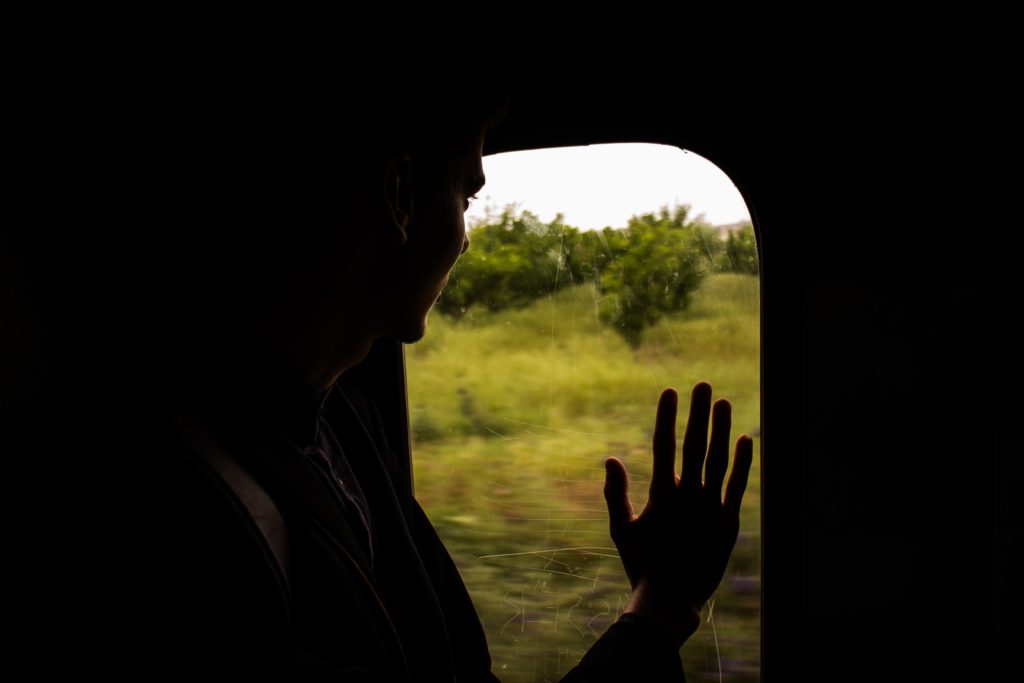
Along the way to other places are other places that enter you at great velocities. Too often, such speed blurs and generalizes space: you see generic hills, typical little towns, lots of trees, the usual sky. But the traveling poet uses this motion to ferret out specifics. Fast-forwarding across the miles, the poet understands she is privy to a visual cornucopia. She keeps her hand on the wheel; she stays in her seat; she certainly doesn’t leave the boat; but she peers out the windows and over the deck during the scrolling past to see what is here and there.
In this looking out — this searching — the poet finds land as a topography rich with details. Here is a marsh jeweled with white cranes gliding like paper boats among the cattails. Here is a live oak whose trunk has grown bowed around big-rigs’ slipstreams. Here is a woman wearing butternut squash yellow pants and reading a brochure on bananas. Here is a building whose flank bears a painted advert from long ago, a pullman loaf’s outline haunting passerby privy to this alley angle. Here is fence loping along beside the train, as fast as a horse chasing a memory of a meadow before she was haltered. Here is a ghostly cumulus sky crowd accumulating below. And there are the stars, infinitely unreachable, unachievable even for machines, no matter how much humans tinker with metal.
The poet also does not dismiss the gifts movement leaves within and on the vehicle. Here is a rainbow triangle on the dashboard formed by glass and sun and phone screen. Here is a grey hair from her head caught in the wiper and dancing like a charmed cobra. Here is a honey-roasted peanut in the plane window nook, the salt turning into glints. And so on. The poet collects movement’s souvenirs via anaphora and transforms this imagery of her journey into future poems, dreams, and memories.
OF STASIS;

But journeys certainly aren’t all about movement. Most are punctuated by mean and ugly delays during which you must wait and wait, with no movement in any direction available to poor you in a transportation limbo. Indeed, anybody who has traveled carries around memories of airports where they’ve tarried during long layovers, wandering from gate to gate, inspecting the gift shop simulacra, going nowhere. Or bus trips, which are a dotted line of stops dictated by a schedule continuously disrupted by the ebb and flow of stop and go traffic. Or train rides where your locomotive pulls aside to let another train pass — which just so happens to be the slowest ever freight train inching, creeping, eking, squeaking, lollygagging down the tracks until it eventually shudders past ornamented with hitchhikers, including hypothetical you.
The list continues, but you get the gist: travel involves inertia caused by other people traveling. In these stoppages, you could poke at your phone or take a nap or read a magazine. But the poet knows that these are moments where stillness allows for prolonged consideration. She allows the mishmash of sights surrounding her to marinate, so that the plaid fabric of the waiting room seats transforms from mere pattern to a diagram of the city, or the etchings in the bus stop Plexiglas become love letters to strangers trapped in a caesura.
OF A LIGHT MEDLEY;
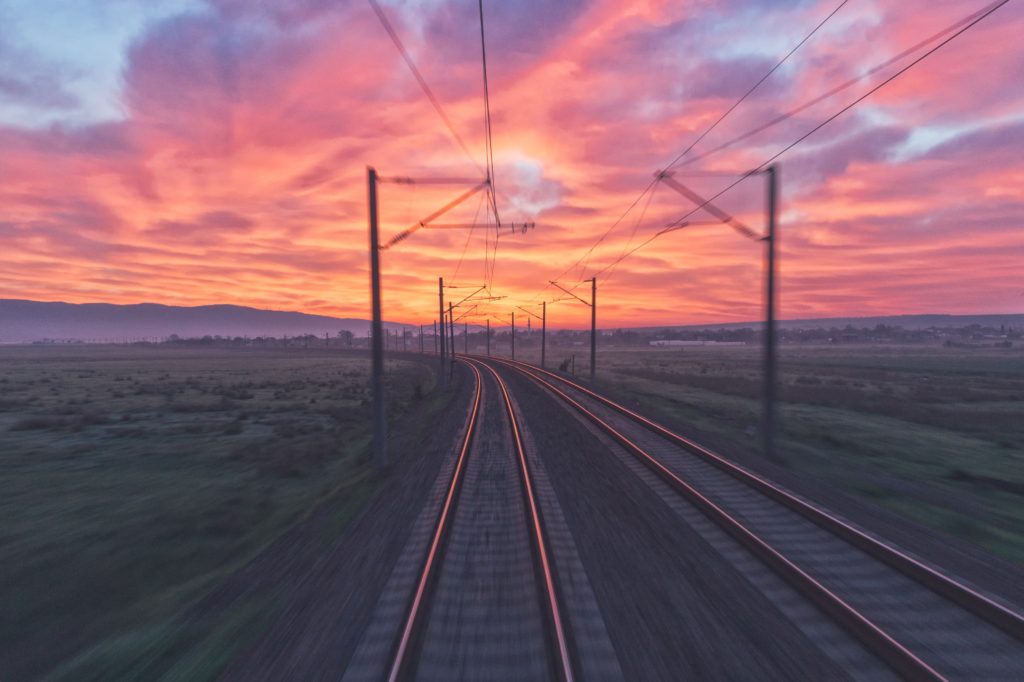
When you travel for many miles, you can see your journey mirrored in the changing sky, if only you remember to look, as the traveling poet does. The poet sees the sky as a metamorphic painting framed by the window of their vehicle, with revelations arising like steam in a meadow as the sun evaporates dew. Indeed, the poet’s eye is keen enough to see morning sun evaporating dew in a meadow, followed by the long shadows of buildings she will never enter flicked into the train, followed by twilight’s glowing grey like ember becoming ash. For the poet, light, intangible, moves and reveals, its journey revealed within the concrete journey of traveling somewhere.
AND OF SIGNAGE.
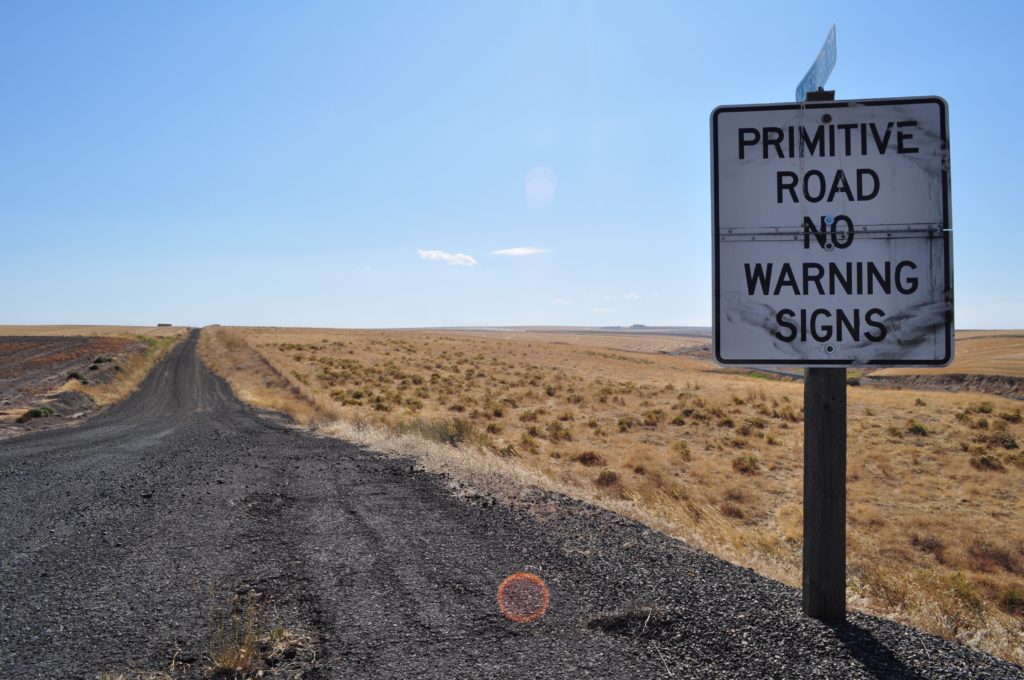
Journeys depend on signage: from airport gate numbers to street names, you must constantly peer about for the words that tell you where to go. Even if you’ve traveled a route many times over, you can’t help looking at the billboards blaring products and the mile markers ticking down the distance: they compel you to read as you are compelled to open a letter without a return address.
Such reading rarely bears poetic fruit for the average traveler, but the poet, not being an average traveler, alights upon the poetry nestled within the literature of landscapes. A yellow diamond declaring “End” down a side street nub is an allusion to the cessation of a secret love. A handmade “Fresh Pecans Ahead” placard staked beside the highway speaks of seasons, water, and hunger. A “No Services Next 50 Miles” sign is a metaphor for the journey of life itself — those long intervals where nobody seems to be around except the self burning itself out. For the poet, unexpected language read along the way inspires language, such that places can become pages and trips can become books.
2. MELODIC DISPATCHES FROM MOMENTUM
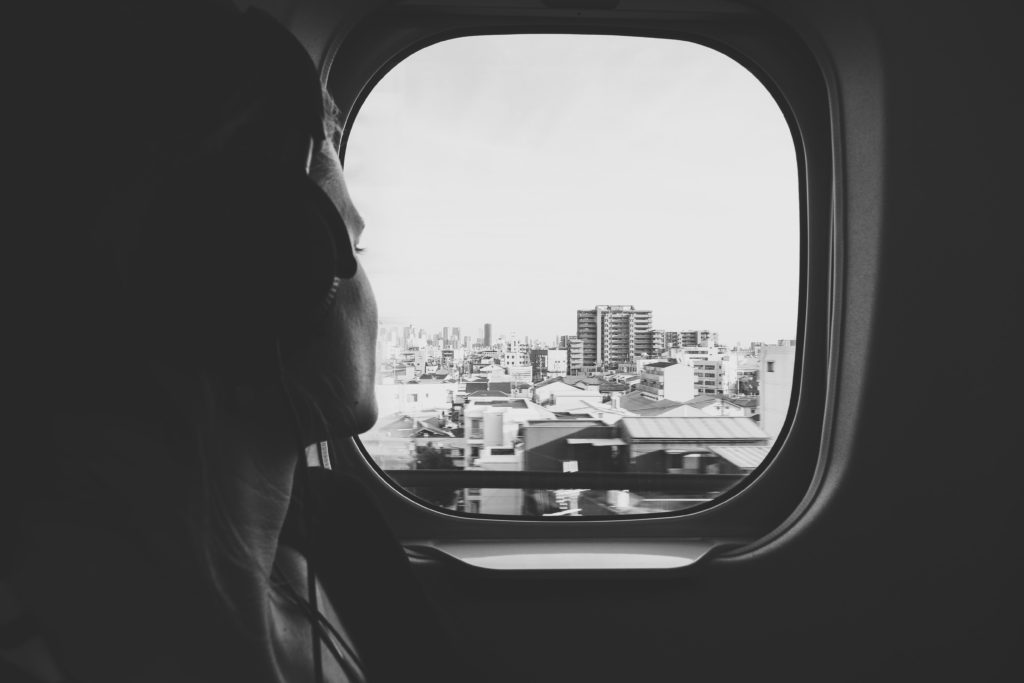
Within movement — behind movement, parallel to movement — flows the noise of that vehicular velocity: the plane engine’s roaring purr, the train’s clackity clack clack clack on the tracks, your car’s aerodynamic shape pushing through wind at 70 mph, the clop clop of the horse you’re riding (yup, don’t look now, but you’re on a horse).
Tune in to this steady sound like a poet, rather than tuning it out as you tend to do: within, you’ll find land, sky, and water — an underlying elemental ambience. This is the music of iron and wood, wing and cloud, gravel and rubber, hull and water, and so on. This is the harmonious cacophony of travel — a ripe field of onomatopoeic strawberries ready for plucking, eating, and transforming into sweet red poems in your hotel room.
The poet also accepts aural intrusions — the sonic idiosyncrasies that carry the figurative ear outside the vehicle and into a narrative that can never be completed because distance has already silenced the source: the foghorn’s bellow that speaks of brine, mist, and the deep; the crash of large objects in a roadside factory orating muscle aches; an eagle’s screech narrating a small, cotton-tailed death.
But all this is not to say the traveling poet doesn’t listen to music. Whether she’s blasting the best study music playlist for deep thinkers as she drives up the coast, or has her headphones plugged in as the train weaves through tunnels (and let’s pause here to notice the tunnel — a hole bored through pure rock — stone above, below, around, surrounding her, painting the cabin in darkness, earthiness, magma, lava, the center of the planet for fifteen seconds while she holds her breath and wishes to be published), composed music can choreograph visuals that would otherwise appear arrhythmic or static. The poet who wanders and listens to music sees the trees dance, the telephone lines tap out a bossa nova beat, the clouds scud in a cirrus tango. In the landscape become rhythmic, the poet can discover the cadence of a line that will cascade into a poem that percolates all over the page.
3. A FLUX REDOLENT WITH REMINISCIENCE
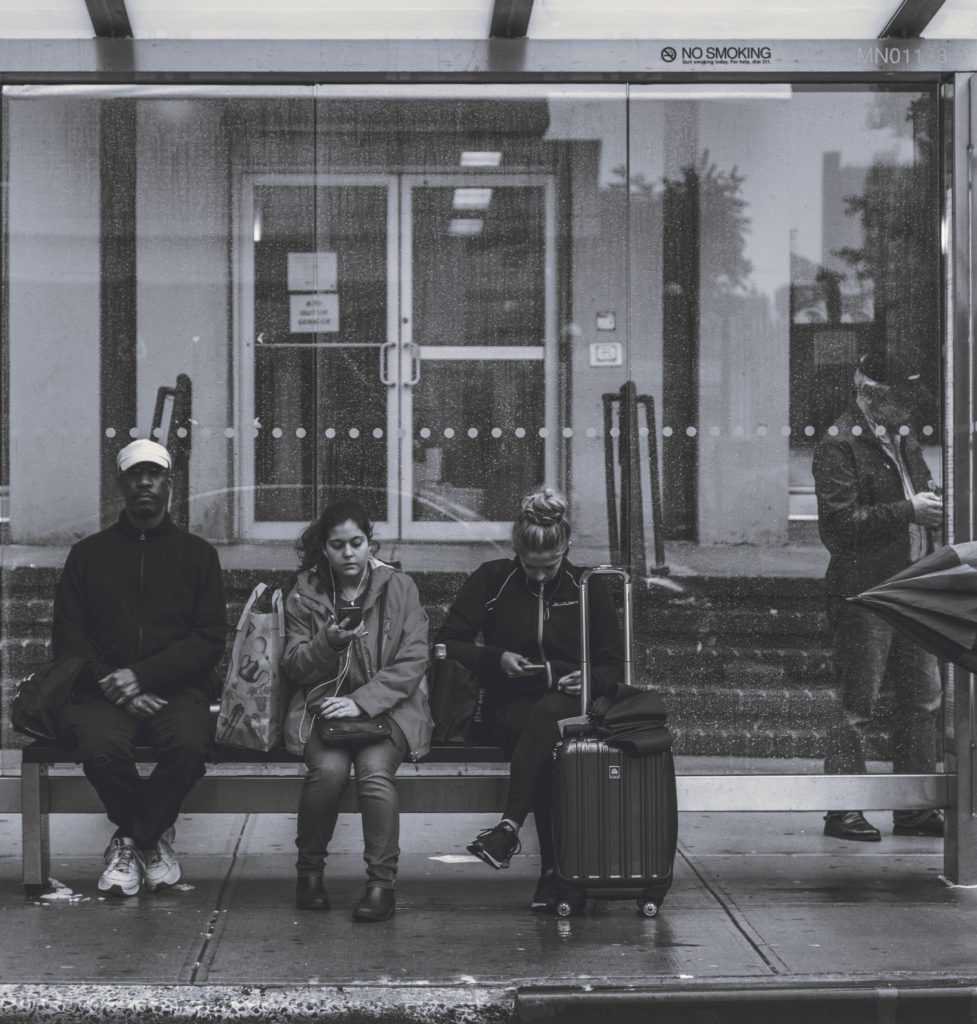
More than any other sense, smell unearths nostalgia from within our bones. Perhaps it’s because aromas tend to come out of nowhere, with no discernible source, wisping from mystery to enter us with the greatest intimacy. A smell is a sensual experience that comes and goes without warning, transporting us instantly to other moments when the potatoes were cooking, or she took our hand by the garlic restaurant, or the fennel bushes wafted a maple syrup scent on a Christmas walk beside the coast, and then suddenly departing, dissipating, and leaving us stranded back in the present. Even a prosaic traveler can’t help being carried away by a fume of coffee or a gust of brine: regular people love big, ubiquitous odors.
However, the poet is unique because she allows herself to be taken in unexpected directions by even the most tenuous scent — a relinquishing of control to the synaesthetic whims of whiffs. While traveling, when the poet shuffles along with the crowd, shrouded in the sillage of the woman ahead — a trail smelling of purple lupine — the poet continues walking even as she is transported to the summer days when she’d rush into the back room of her grandmother’s house and pull the picture books from the turquoise bookcase, always settling on Miss Rumphius, taking the text onto the patio where she’d sit beside the mossy oak and read about the red-and-grey-haired lady who scattered seeds so that cerulean, white, pink, light blue, and purple lupine could wildly rocket skyward from roadsides and hilltops.

While traveling, when the poet smells a cigarette through her window as she waits at a stoplight, she doesn’t simply brush away the fumes — she remembers looking up through the rippling aqua water of the pool where she was diving for neon sticks to see her grandmother and aunts standing on the deck, cigarette smoke rising into the cloudless ultramarine desert sky, a few of the people she loved the most glimmering to her even at such depths as she gathered the treasure of this moment before rising to the surface and breathing in the world deeply.
From a hoppy aroma that recalls the softness of green moss on grey tombstones in a Victorian cemetery slick with light rain, to the smell of baking bread evoking the morning she re-read Mrs. Dalloway in a wrought-iron chair on the grey cobblestones outside a cafe, the poet knows that aromas allow access to sensory details of long submerged memories from which complex, synaesthetic images can emerge.
4. SMALL COLLISIONS IN MOTION
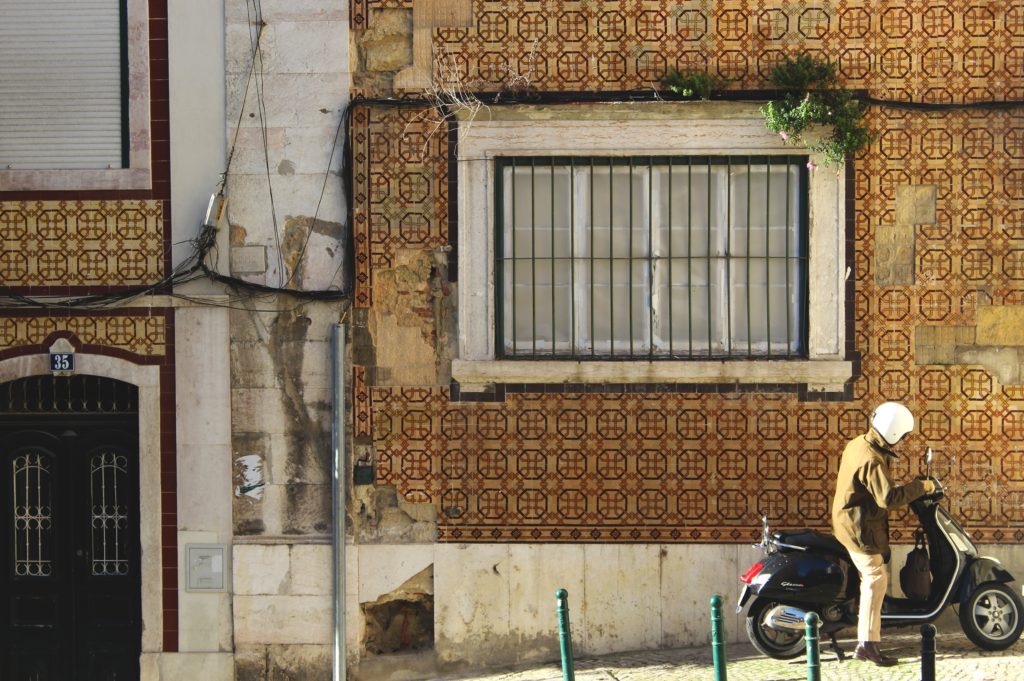
When you travel, you likely rarely think about what you touch, except perhaps when avoiding grabbing a fingerprint-glazed handrail. After all, vehicles do the touching for you during travel: the car’s tires rollick on the road’s surface; the train’s steel wheels balance on the tracks; the plane accepts all the wind; the boat’s hull cleaves the water. Even when walking, you probably never contemplate your thinly coated soles treading on concrete, dirt, and grass.
But the traveling poet knows to notice every touch, whether it’s with a pane of glass, a cushioned seat, the conductor’s hand when he grabs the ticket, or a stranger’s flapping pea-coat. Every contact is a direct connection between the poet and something else that can foster philosophical associations.
On the road, the poet’s grip on the steering wheel isn’t simply a holding-on to a round object, but the contact that’s keeping her alive as she speeds on and on. She thinks that such a touch represents the way we reach inside ourselves to try to steer our fates towards this or that peace when we sense that our feelings are running unbridled toward the brink. And as for the center of her body that is cradled in the seat’s embrace — she ponders how strange it is to have such an unmoving core as she flies across the miles — something like the inertia of habit as we age. And as she feels her foot pressing pedals, controller of her velocity, she becomes hyper-conscious of how it’s sending her through space from place to place, exchanging this plot of earth for that, but always trapped within the map of where she’s already been.
Elsewhere, another rider’s hot breath hits your ear as you hold the bus rail and wait for your stop. Beyond disgust at the gusty touch, because you are becoming a poet, you home in on the fact that something living, breathing, and palpitating gently sways on this vehicle with you — impossibly intimate, impossibly distant. From this breath, you begin to conjure up a stanza about the fusion of breaths, the breadths that close between strangers who become lovers.
5. THE AMUSE-BOUCHES OF MOVEMENT

When traveling, meals usually arrive in the form of snacks gulped down for energy to keep going. You mush pretzels into our your mouth as you drive listlessly toward Arizona, consuming a conveyor belt of twists, and gulp watery coffee at a desert rest stop while you search for directions on your phone.
But the traveling poet doesn’t just eat: she tastes. She discovers the faraway ocean in the salt on those pretzels. She finds what a pool of water in the Mojave means in that coffee. And she also diverges — chooses to use an hour delay to munch, pulls off the road for brunch, decides that there’s time before the next bus to try that bakery over there with buttery croissants glowing in the window.
Because the poet knows that food always tastes better elsewhere: it gets imbued with the flavor of distance and stands out on the tastebuds as grub distinct from the habitual meals of home. After all, the most intimate way to learn about places along the way is to eat in them — to put something into your body that was conjured up many miles from where you started, and to allow the flavors to speak of journeys, cycles, repetitions, surprises, jouissance.
DESTINATION: THE POETRY OF TRAVEL

From this sensual immersion, the traveling poet harvests imagery, sonic power, philosophy, syntactical movement, figurative language, and emotion, and knits these filaments into a complete piece that itself will travel many miles, into minds diverse and widespread, becoming as transportive as the planes, trains, boats, and automobiles that tote us towards the glisters of desire, comfort, and obligation elsewhere.